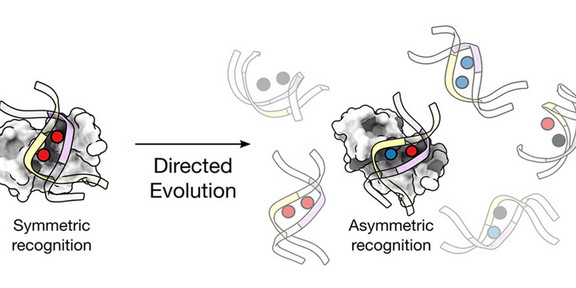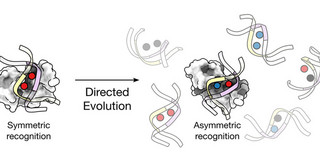EU to Fund the Development of Molecular Probes for DNA Analysis
- Research
- Top News

With an ERC Proof of Concept Grant, the European Research Council is funding the development of DNA analysis methods using innovative molecular probes at TU Dortmund University. Prof. Daniel Summerer from the Department of Chemistry and Chemical Biology is receiving 150,000 euros to close the gap between the results of his groundbreaking research and the early stages of marketing. Prof. Summerer had already developed the concept for the new probes as part of an ERC Consolidator Grant worth several million euros.
Prof. Summerer’s research focuses on DNA analysis. Earlier this year, his working group had already made significant progress in the field: The team was the first to describe molecular probes that can be used to read new combinations of certain epigenetically modified DNA building blocks in both strands of the same DNA double helix. Epigenetically modified DNA building blocks regulate central biological processes in humans, such as embryonic development and the development of cancer – making them particularly interesting to researchers.

With the ERC Proof of Concept Grant, Prof. Summerer can now use these probes to develop and market new analytical methods of diagnosis. To do this, his team is first trialing the use of the probes for genome enrichment from the embryonic stem cells of mice as well as from cancer cells. At the end of the development stage, there is set to be a simple test kit available.
Simultaneous analysis of both DNA strands
In the future, the new probes will be used to create genomic maps of a special double helix modification. Modifications of this kind can play a key role in controlling which genes in a cell are switched on or off and are therefore involved in forming various cell types – such as nerve cells or white blood cells. It has long been known that abnormally inserted or missing modifications of DNA building blocks can disrupt cell growth and turn a healthy cell into a proliferating cancer cell. For this reason, scientists are trying to find out where exactly these modifications occur in the genome.
In their current project, Prof. Summerer’s team is investigating the DNA base C, which can be modified differently when it occurs in the base sequence CG in the double helix. This sequence and its exact opposite occur in the two strands of the double helix, and the C contained in both strands can also be modified. While all of these modifications can be routinely detected, right down to their precise position in a DNA strand, analyzing both strands of the same DNA double helix simultaneously is quite an analytical challenge. To solve this, Prof. Summerer’s working group used a method known as directed evolution to develop new protein probes that can selectively recognize a specific combination of two different modifications in both strands of the CG sequence.
About the ERC Proof of Concept Grant
Only researchers who have previously received an ERC grant can apply for a Proof of Concept Grant. From 2017 to 2021, Prof. Summerer received almost two million euros in funding for his EPICODE project as part of an ERC Consolidator Grant.
Using a method known as directed evolution, the TU Dortmund University team generated protein probes that can selectively recognize a specific combination of two different modifications in both strands of the CG sequence.
Contact person for inquiries:




![[Translate to English:] Partner Four hands are holding the green logo of TU Dortmund University](/storages/tu_website/_processed_/1/d/csm_Partner_Nicole_Rechmann_KW_40b35bb3fd.jpg)




![[Translate to English:] Forschung An apparatus with tubes in a laboratory](/storages/tu_website/_processed_/0/c/csm_Forschung_Juergen_Huhn_cbd34afd6d.jpg)
![[Translate to English:] Studium Five students are sitting in a lecture hall. They are talking to each other.](/storages/tu_website/_processed_/c/9/csm_Studium_FelixSchmale_81d94adc86.jpg)






